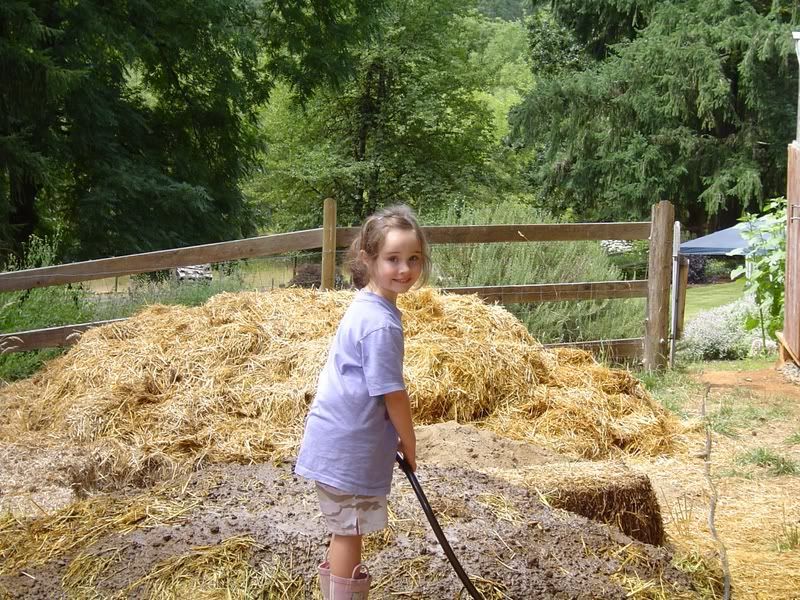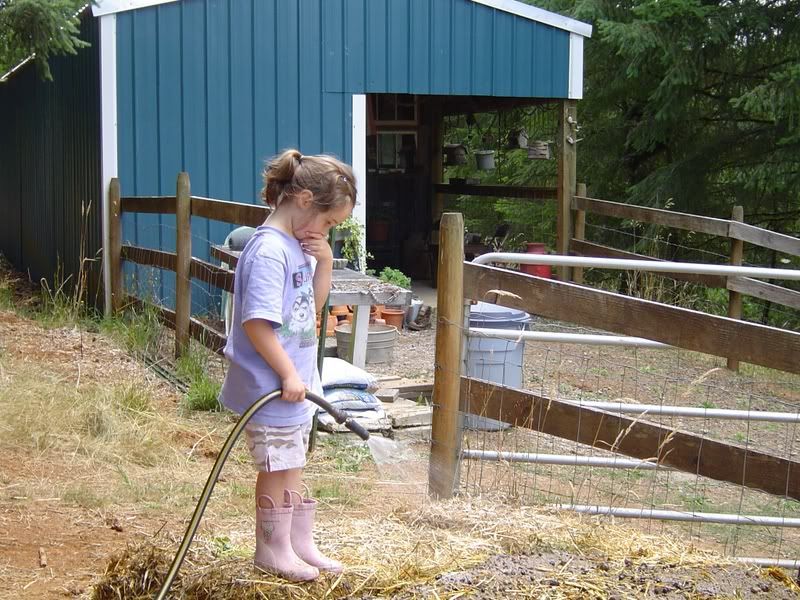
Let's talk compost! The compost pile above has a cloud of steam drifting away from it. Upon waking in the morning, my husband stares out our bedroom window as usual for a few moments. He was questioning where these little clouds were coming from that just sorta puffed into the air repeatedly. I was curious now, and got up to see. The pile was obscured from our view so it took me a moment to realize where it was coming from. Then it hit me, the compost pile was hard at work making next years rich soil for the garden. Now that's bliss folks! Composting is really a neccessity for us. We have manured bedding from the barn that needs to be disposed of, as well as garden debris, and of course kitchen wastes. If we moved to the city tomorrow, I would still probably compost rather than pay the garbage service to haul away the components that most yards posess to create such a beneficial resource. I think with a little education, everyone could learn ways to "uppen" the earth rather than take away from it. Our preferred composting method is referred to as cool composting or lazy as some call it. You pile everything in layers and wait usually a full year or more before you can use it, as opposed to occasionally turning the pile allowing an influx of oxygen to keep it processing hotter and quicker. Hot composting has the benefit of killing unwanted pathogens, however cool composting contains a greater diversity of soil organisms better able to eliminate pathogens in the long run. Scrutinizing what goes in to the compost will best determine the quality of the results too. In other words nothing "yucky". I have learned that Nitrogen and Carbon are the big boys responsible for a good composting project and what the ratios of these are will determine the final product. Just remember nitrogen is GREEN as in grass clippings (the hottest), garden debris from weeding and trimming, etc. and carbon is BROWN as in autumn leaves, straw, sawdust, twigs, etc. Manure from livestock would be considered a green, however it is not a necessary in the making of good compost. If you lack in green consider keeping a bag of alfalfa meal on hand. If brown, well a neighbor usually has leaves to spare or consider picking up a bale of straw. Layer these components with a few shovelfulls of soil inbetween to get the earthworms and other soil life going. These creatures will love your kitchen scraps too. Now sprinkle the pile with water to keep it moist but not soaking. Because I cool compost by fall my pile has cooled down considerably, so after making sure it is moist enough (the first few fall rains help with this). I will occasionally poke at it through out the winter months to see how it is doing. If my compost isn't to my liking by spring, no problem, it will be soon enough. As spring provides us with fodder for the new pile started, we will usually use scoops of this not quite done compost to innoculate our new pile with goodies from the soil food web. In the end, if what you have is a crumbly, humusy, sweet smelling soil, congratulations, you did it! If success inspires you further, I would recommend Teaming with Microbes, a book written by Jeff Lownfels and Wayne Lewis. I am particularly interested in their instructions on creating powerful compost tea. We'll let you know how that goes. Happy composting!

Composting slows as a pile dries out. Here our grandaughter Alissa is watering the pile in order to keep the composting process active.


1 comment:
The only thing better than a respectable compost pile is a sweet little girl with pink hello kitty boots working on a respectable compost pile.
Love it!
Post a Comment